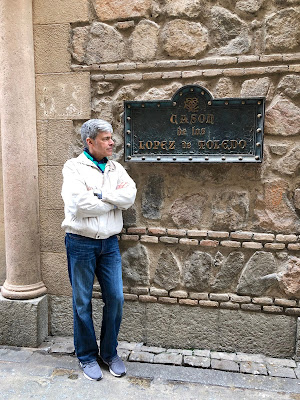a poem by Charley Bruns,
featuring lyrics by David Castaño of Eastbourne
Don’t try to impress me
by saying George Washington slept there.
We had seven presidents stay here
on vacation away from Washington.
Their names were Grant, Hayes, Harrison,
Garfield, Arthur, McKinley and Wilson.
These presidents put Long Branch on the map,
and the crowds from New York did come.
Soon so did others in their carriages,
four-legged and iron horses to soak up the sun,
enjoy the summer breezes, walk the bluffs and just have fun.
Did I mention the Atlantic Ocean?
Not too many cities
can call an ocean their backyard.
Among the visitors were the wealthy
industrialists and bankers and the Bohemians.
They gambled, they drank, they ate,
and eventually most found their way home late.
But many never returned.
Others who came in their wake did decide to stay,
and formed a year-round community
that included a main street called Broadway,
complete with stores and theaters.
Long Branch got so big and diverse
with Jewish folk, African-Americans and Catholics,
even the Ku Klux Klan came to march downtown.
Fortunately, the door hit their asses on the way out.
The Mafia treated the city like a playground and more,
playing in the Surf Lounge and paying for
the construction of the Harbour Towers high-rise.
One little pussy of a mobster bragged
on the pages of Life magazine,
“What we got in Long Branch is everything.
Police we got. Councilmen we got, too.
We’re gonna make millions.”
Pussy Russo was eventually found dead
with three bullets in his head
in a Long Branch spa while on furlough from prison,
because his bosses feared he would talk too much
in order to stay and enjoy the friendly city.
We had a native son and LBHS grad
who was named poet laureate
of the entire U.S. of A.
You can read his poem “Long Branch, New Jersey,”
on a plaque in Pinsky Park on Broadway.
The pier beckoned more visitors with its
amusement rides, arcades, bars.
There were hot dogs and other kinds of matter to put down,
which many people from across the state in fact did
as other shore towns south lured pleasure seekers
with their siren song of more, newer, better attractions.
The city eventually became symbolized by the Haunted Mansion,
with fake ghouls and real rats on its aging pier.
It continued creating memories for more locals
but fewer visitors before finally feeding the appetite
of a hungry fire that left behind charred splinters.
“My city is burning down down down,
and you’re not around.
You’re paying attention to some other town,
you missed us burn to the ground.”*
From the ashes rose the entirely new Pier Village,
with its fine restaurants, cafes, boutiques,
to attract people from all around,
but not the nostalgia of many locals, once again proving:
“You can please some of the people all of the time,
you can please all of the people some of the time,
but you can’t please all the people all of the time.”
Did Abraham Lincoln say that
while Mary Ann Todd was staying in Long Branch?
In any case, enough local citizens welcomed the change
and re-elected Mayor Schneider six times.
Today we have Brazilians and Mexicans
and lots of other Latinos
calling the city home, with their restaurants
and various businesses on Broadway,
which still has a performing arts theater
and now even a microbrewery.
“We’ve been made by these broken streets,
and now we make all these broken beats.
But we just dig it and we just dig it,
but a keep on moving on.
That’s why we’re fighting, that’s why we’re fighting,
for where we belong.”*
We still have Jewish folk a-courting
on the boardwalk Thursdays and Sundays,
and Italians and African-Americans like always.
The city even has a Sicilian-born poet laureate,
whose voice rises above the tongues of people
from all around the world on our boardwalk
and promenade every Fourth of July.
The ghosts of writers and artists past
smile at names like di Pasquale, Castaño and Delima now.
What can they say, except
“Wow, how cool is this Long Branch?”
“Come with the stylee if you want
to come find Long Branch rhythm.
You gotta love the way the sky looks,
when everyone lets it bring them down.
And though the sun ain’t coming out,
I see light around my home town.”**
The Ink Well and Brighton Bar,
home of original music,
stand alongside the Celtic Cottage
and some new Brazilian businesses,
as a synagogue is built in West End,
which isn’t actually in the west end.
Did I mention the Atlantic Ocean?
Not too many cities
can call an ocean their backyard.
Long Branch is indeed a friendly city,
with no vacancy for those
who want to bring it back down
from where it rose.
“So when these ashes turn to gold,
and when these pages start to unfold,
I have seen the best of my city,
because I’ve seen the worst of my city.”*
—
*Copyright 2016 by David Castaño, “Burning City” as recorded and performed by Eastbourne
**Copyright 2016 by David Castaño, “LB Stylee” as recorded and performed by Eastbourne
Poem copyright 2019 by Charles A. Bruns





